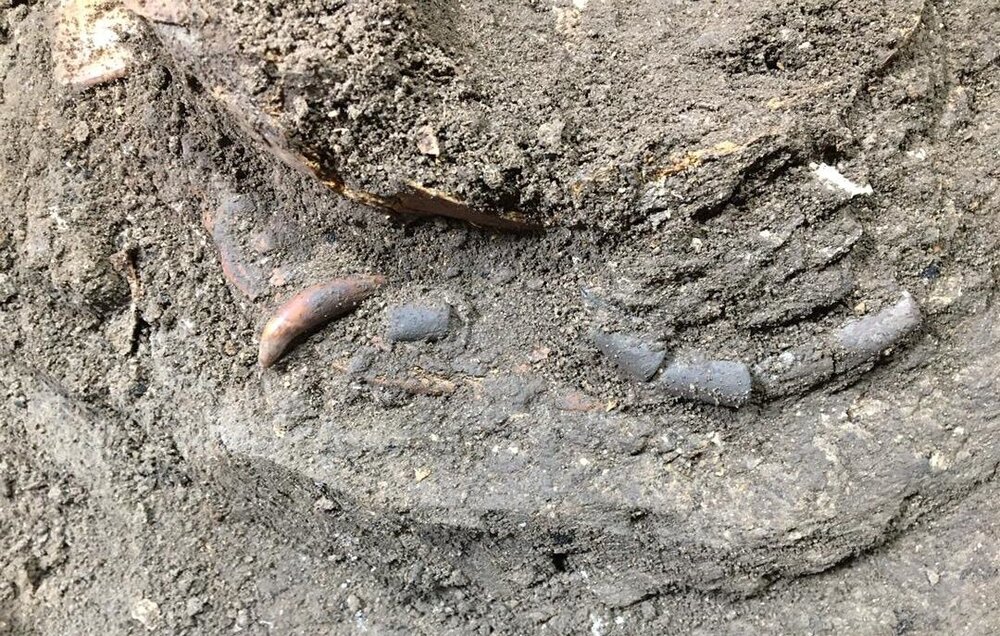Rare discovery yields traces of hunter-gatherers in northern Iran

TEHRAN – A team of Iranian archaeologists has discovered remains of an infant that could yield clues about the life of hunter-gatherers in northern Iran.
The rare discovery was made in Hotu Cave which is situated in Behshahr county of Mazandaran province, provincial tourism chief Seifollah Farzaneh said on Monday.
“The archaeologists discovered the skeleton of a child, which was buried in a seated position and wearing a wolf tooth necklace on its neck,” the official said.
“This burial may be the manifestation of highly emotional moments of the life of hunter-gatherers in Mazandaran [region]…. and one of the emotional behaviors of our ancestors in this part of Iran.”
Assessed to belong to a 6-8-month-old baby, the [fossilized] corpse has been found in rock layers of the Epipalaeolithic era, which dates back more than 12,000 years.
The survey is supervised by Iranian archaeologist Hasan Fazeli Nashli in close collaboration with the University of Tehran.
Early seasons of excavation took place in the cave from 1949 to 1957 by American anthropologist Carleton S. Coon, in which several ancient objects and tools were discovered.
Hunter-gatherer, also called forager, is referred to any person who depends primarily on wild foods for subsistence. Until about 12,000 to 11,000 years ago, when agriculture and animal domestication emerged in southwest Asia and Mesoamerica, all peoples were hunter-gatherers. Their strategies have been very diverse, depending greatly upon the local environment; foraging strategies have included hunting or trapping big game, hunting or trapping smaller animals, fishing, gathering shellfish or insects, and gathering wild plant foods such as fruits, vegetables, tubers, seeds, and nuts. Most hunter-gatherers combine a variety of these strategies in order to ensure a balanced diet.
Soaked in a vibrant history, Mazandaran (also known as Tabarestan) was a cradle of civilization since the beginning of the first millennium BC. According to Britannica Encyclopedia, it was almost overrun in about 720 CE by the Arab raiders.
Its insecure eastern and southeastern borders were crossed by Mongol invaders in the 13th and 14th centuries. Cossacks attacked the region in 1668 but were repulsed. It was ceded to the Russian Empire by a treaty in 1723, but the Russians were never secure in their occupation. The area was restored to Iran under the Qajar dynasty. The northern section of the region consists of a lowland alongside the Caspian and an upland along the northern slopes of the Alborz Mountains.
AFM
Leave a Comment